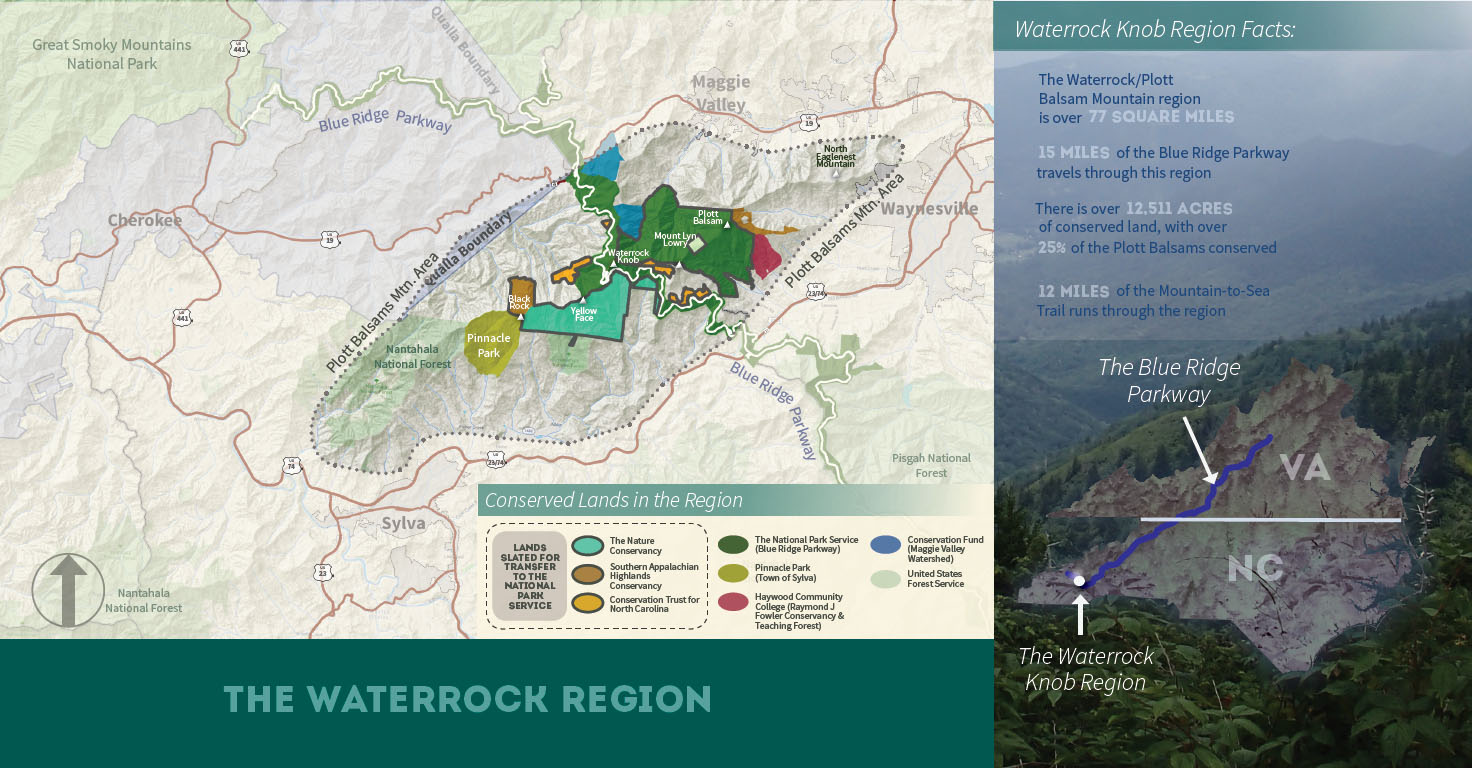Equinox Leads the Development of a Vision for Public Lands Rich with Biodiversity, Elk, and Fly Squirrels
The Waterrock Knob region of Western North Carolina hosts some of the rarest and most biodiverse landscapes in the Eastern United States. Elk, rare salamanders, Carolina flying squirrels, and slowly disappearing high elevation spruce-fir forests all inhabit this landscape. At a height of 6,292 feet, the region’s namesake, Waterrock Knob, is the highest point along the Blue Ridge Parkway and a major scenic destination for visitors of Waynesville, Maggie Valley, Sylva, and Cherokee. Apart from its ecological importance, the area is also rich with ancient Cherokee and Appalachian cultural history. Recent conservation triumphs have led to the addition of one of the largest stretches of undeveloped land, 5,329 acres, to the Waterrock Knob landscape. This land donation marks the first major expansion along the Blue Ridge Parkway in 60 years. Because of the need for stewardship across management boundaries, Equinox was hired to develop a vision plan for the region that encompasses 15-miles of the Parkway. The plan will look at ways to preserve and manage natural resources while considering opportunities for humans to sensitively engage with the landscape. Working with lead partners, the National Park Service and the Blue Ridge Parkway Foundation, Equinox helped create The Waterrock Knob Regional Vision Plan.
Equinox assessed biological, recreational, natural resource, and cultural resource data to understand the region’s assets. Major themes and opportunities were developed by stakeholders for future consideration. The plan details opportunities for collaboration to conserve rare ecosystems, to provide sustainable recreation and tourism opportunities for regional trail connections and backcountry experiences, and to present immersion into the rich Cherokee and Appalachian cultural heritage of the region.
A comprehensive stakeholder and public engagement process received input from conservation groups, recreation interests, land trusts, and local municipalities together. The process culminated with an open house full of public citizens and much interest by the media.
This plan will be a helpful tool for the National Park Service, as they consider the opportunity for large-landscape ecosystem collaboration in the future. This plan can serve as a guiding document for partners and the National Park Service as they share management objectives and activities.

